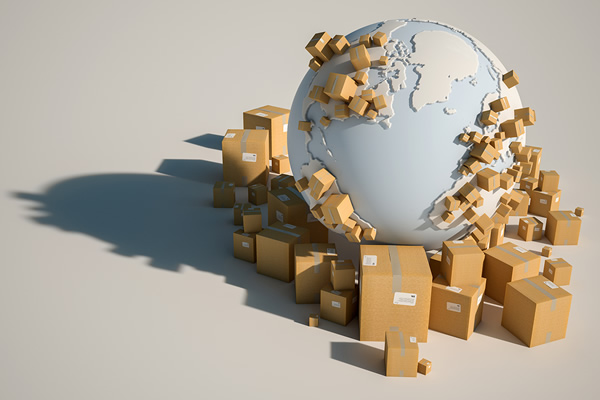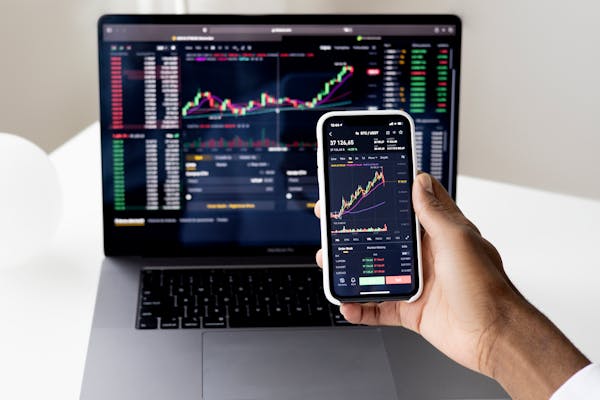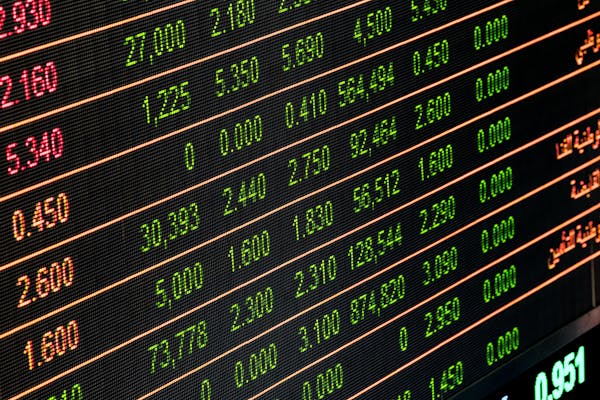
The term “supply chain resilience” has taken center stage in the business world, and for good reason. Recent disruptions have sent shockwaves through global supply chains, revealing their fragility and vulnerability to various shocks, from the COVID-19 pandemic to natural disasters, cybersecurity threats, and geopolitical tensions. In this comprehensive article, we will take a deep dive into the critical lessons learned from these disruptions and explore the multifaceted strategies that companies are employing to bolster their supply chain resilience. We will cover everything from the importance of sustainable practices to the role of technology and the human element.
Understanding Supply Chain Resilience

Why Supply Chain Resilience Matters
Supply chain resilience is about a company’s ability to withstand and adapt to unforeseen disruptions. The COVID-19 pandemic, which brought the global economy to its knees, serves as a stark reminder of why resilience is not just a buzzword but a necessity. When supply chains fail, people’s access to critical goods and services is jeopardized.
The Ever-Evolving Supply Chain Landscape
Globalization, over the past few decades, has transformed supply chains into intricate, interconnected networks. Companies rely on suppliers from all corners of the world, making them highly susceptible to shocks that can originate anywhere. We will delve into the benefits and vulnerabilities associated with this interconnectedness.
The COVID-19 Pandemic
Supply Chain Vulnerabilities Exposed
The COVID-19 pandemic exposed vulnerabilities that were lurking beneath the surface. One of the most alarming revelations was the fragility of healthcare supply chains. The race for personal protective equipment (PPE) in the early stages of the pandemic highlighted the lack of preparedness and resilience in this critical sector.
The Race for PPE: A Wake-Up Call
The race for PPE was a wake-up call for governments and businesses alike. It revealed the immediate need for a paradigm shift in supply chain management, prompting companies to revisit their strategies, diversify suppliers, and focus on safety stock.
Shifting Priorities in the Healthcare Sector
The pandemic reshaped healthcare supply chains, leading to an emphasis on domestic production and the need for stockpiling critical medical supplies. The lessons learned from this sector are applicable to others as well, showing the importance of adaptation and flexibility.
Natural Disasters and Environmental Factors

Hurricanes, Earthquakes, and Supply Chain Interruptions
Natural disasters have always been a risk, and climate change is making them more frequent and severe. Companies are learning the hard way about the importance of disaster preparedness, alternative sourcing, and the mitigation of environmental risks.
Climate Change Adaptation in Supply Chains
Climate change is no longer a distant concern but a pressing reality. Companies are adopting sustainable practices as a proactive approach to mitigate environmental risks. From eco-friendly sourcing to reducing carbon footprints, supply chains are embracing environmentally responsible strategies.
Sustainable Practices for Resilience
Sustainability is not only a moral obligation but also a resilient strategy. By reducing waste, adopting circular economy principles, and sourcing responsibly, companies are not only contributing to a healthier planet but also enhancing their own longevity.
Cybersecurity Threats
The Rise of Cyber Attacks on Supply Chains
Cyber threats have emerged as a major disruptor of supply chains. Ransomware attacks, data breaches, and other cyber incidents can be as crippling as natural disasters. The need to safeguard digital infrastructure and data is paramount.
Protecting Data and Digital Infrastructure
Data is a critical asset in the modern supply chain. Companies are investing heavily in cybersecurity measures to protect their digital infrastructure. This includes advanced encryption, intrusion detection systems, and employee training to recognize and thwart cyber threats.
Supply Chain Transparency and Accountability
Transparency is a key defense against cyber threats. By having a clear view of all supply chain components and partners, companies can better identify and address vulnerabilities. Additionally, holding partners and suppliers accountable for their cybersecurity practices is crucial.
Geopolitical Tensions
Tariffs and Trade Wars: Disrupting Global Flows
Geopolitical tensions, such as trade wars and the imposition of tariffs, can quickly disrupt global supply chains. Companies are navigating these uncharted waters by diversifying suppliers, hedging currency risks, and staying informed about international trade dynamics.
Diversification of Suppliers and Geographical Risks
Diversifying suppliers is a risk mitigation strategy. Companies are looking to source critical components from multiple regions to minimize the impact of geopolitical tensions. Moreover, they are also assessing the geographical risks associated with their suppliers’ locations.
Navigating Political Unpredictability
Political unpredictability is a constant in today’s world. Companies are investing in political risk analysis, staying informed about policy changes, and exploring options to quickly adapt to new trade regulations or restrictions.
Lessons from Historical Disruptions
Insights from Previous Global Crises
Historical disruptions provide valuable lessons for building supply chain resilience. By examining past crises, companies can identify patterns and trends, enabling them to better prepare for future uncertainties.
Adapting to New Paradigms: Preparedness Matters
Preparedness is a cornerstone of resilience. Companies are investing in scenario planning, stress testing, and emergency response protocols to ensure they can adapt swiftly to new paradigms, even when faced with the unexpected.
Technology and Innovation
The Role of Technology in Supply Chain Resilience
Technology is a driving force in enhancing supply chain resilience. Companies are leveraging AI, IoT, and Big Data Analytics to gain real-time insights, optimize inventory levels, and enhance supply chain visibility.
Automation and the Future of Supply Chain Management
Automation is reshaping the landscape of supply chain management. Companies are adopting automation in warehouses, transportation, and even decision-making processes to enhance efficiency and responsiveness.
Collaboration and Partnerships
Building Resilience through Stronger Alliances
Collaboration is a cornerstone of supply chain resilience. Companies are forming closer partnerships with their suppliers, sharing information, and working together to mitigate risks.
Supplier Relationships and Communication
Effective communication with suppliers is crucial. Companies are investing in transparent, two-way communication to quickly address issues, adapt to changing circumstances, and strengthen the overall relationship.
Industry Cooperation in Times of Crisis
In times of crisis, industries can come together to address common challenges. By sharing resources, expertise, and best practices, they can collectively enhance supply chain resilience.
Risk Assessment and Mitigation
Identifying Vulnerabilities in Your Supply Chain
Risk assessment is the first step in building supply chain resilience. Companies are conducting thorough risk assessments to identify vulnerabilities, whether they stem from suppliers, transportation, or geopolitical factors.
Developing Effective Risk Mitigation Strategies
Once vulnerabilities are identified, companies are developing effective risk mitigation strategies. This includes creating backup sourcing options, diversifying suppliers, and stockpiling critical inventory.
Creating a Culture of Continuous Improvement
Supply chain resilience is not a one-time effort but an ongoing journey. Companies are fostering a culture of continuous improvement, where they regularly evaluate their strategies, learn from past disruptions, and adapt to an ever-changing world.
Inventory Management and Buffer Stocks
The Art of Stockpiling: Balancing Costs and Resilience
Stockpiling is a delicate balance between maintaining enough inventory to withstand disruptions without incurring excessive holding costs. Companies are carefully considering how much buffer stock is necessary for their specific circumstances.
Lean Principles and Supply Chain Resilience
Lean principles, while efficient, can leave supply chains vulnerable. Companies are reevaluating the application of lean strategies, especially in critical areas, to enhance resilience without sacrificing efficiency.
The Human Element
Skilled Workforce and Crisis Management
A skilled workforce is the backbone of supply chain resilience. Companies are investing in employee training, crisis management simulations, and cross-training to ensure that their teams are adaptable in times of crisis.
Employee Wellbeing and Retention
Employee well-being is essential to maintaining a resilient supply chain. Companies are placing a higher emphasis on the health and satisfaction of their workforce to reduce turnover and maintain institutional knowledge.
Regulatory Compliance
Navigating Complex Regulatory Environments
Navigating complex regulations is a challenge for international supply chains. Companies are investing in legal and compliance teams to ensure they meet all requirements and stay on the right side of the law.
The Role of Government in Building Resilience
Government policies and regulations can impact supply chain resilience. Companies are engaging with governmental bodies to advocate for policies that enhance, rather than hinder, their resilience efforts.
Sustainable Practices
Eco-Friendly Supply Chain Resilience
Sustainability is not only about being environmentally responsible; it’s about building a resilient future. Companies are adopting eco-friendly practices, reducing waste, and minimizing their carbon footprint to ensure long-term viability.
Circular Economy and Waste Reduction
The circular economy is gaining traction in supply chain strategies. Companies are exploring ways to reduce waste, reuse materials, and extend the life of products, all of which contribute to resilience.
Sustainable Sourcing and Packaging
Sourcing responsibly and using sustainable packaging materials are key components of supply chain resilience. Companies are reevaluating their sourcing strategies to ensure they align with long-term sustainability goals.
Case Studies: Resilience Success Stories
Companies that Triumphed Over Disruptions
Real-world success stories showcase the effectiveness of resilience strategies. We’ll examine companies that not only weathered disruptions but emerged stronger from them.
Key Takeaways from Resilient Organizations
What can we learn from companies that have successfully built resilient supply chains? We’ll distill the key takeaways from these organizations.
The Art of Adaptation in Unpredictable Times
Adaptation is the name of the game. We’ll explore how organizations have mastered the art of adapting to unexpected disruptions and thriving in the face of uncertainty.
Conclusion
The concept of supply chain resilience has become imperative in today’s business landscape, underscored by the many disruptions ranging from the COVID-19 pandemic to geopolitical tensions and cybersecurity threats. This comprehensive exploration has illuminated the critical importance of preparedness, adaptability, and collaboration in mitigating risks and building robust supply chains. Companies are increasingly recognizing the need to embrace sustainable practices, leverage technology, and prioritize the human element to enhance their resilience. Through diligent risk assessment, effective mitigation strategies, and a commitment to continuous improvement, organizations can navigate uncertainties, foster innovation, and emerge stronger from disruptions, demonstrating the resilience needed to thrive in an ever-changing world.


